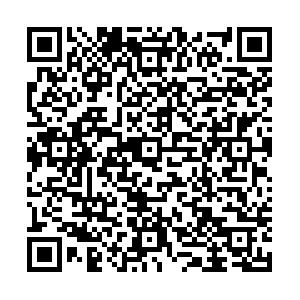|
[1]
|
Hoekstra CJ, Stroobants SG, Smit EF, et al.Prognostic relevance of response evaluation using[18F]-2-fluoro-2-deoxy-D-glucose positron emission tomography in patients with locally advanced non-small-cell lung cancer. J Clin Oncol, 2005, 23(33):8362-8370. |
|
[2]
|
Rosenbaum S J, Stergar H, Antoch G, et al. Staging and follow-up of gastrointestinal tumors with PET/CT. Abdom Imaging, 2006, 31(1):25-35. |
|
[3]
|
Scheidhauer K, Walter C, Seemann MD. FDG PET and other imaging modalities in the primary diagnosis of suspicious breast lesions. Eur J Nucl Med Mol Imaging, 2004, 31(Suppl 1):S70-S79. |
|
[4]
|
Niederkohr RD, Rosenberg J, Shabo G, et al. Clinical value of including the head and lower extremities in 18F-FDG PET/CT imaging for patients with malignant melanoma. Nucl Med Commun, 2007, 28(9):688-695. |
|
[5]
|
Hany TF, Steinert HC, Goerres GW, et al. PET diagnostic accuracy:improvement with in-line PET/CT system:initial results. Radiology, 2002, 225(2):575-581. |
|
[6]
|
Beyer T, Antoch G, Bockisch A, et al. Optimized intravenous contrast administration for diagnostic whole-body 18F-FDG PET/CT. J Nucl Med, 2005, 46(3):429-435. |
|
[7]
|
Belhocine T, Weiner SM, Brink I, et al. A plea for the elective inclusion of the brain in routine whole-body FDG PET. Eur J Nucl Med Mol Imaging, 2005, 32(3):251-256. |
|
[8]
|
Antoch G, Vogt FM, Veit P, et al. Assessment of liver tissue after radiofrequency ablation:findings with different imaging procedures. J Nucl Med, 2005, 46(3):520-525. |
|
[9]
|
Veit P, K uhle C, Beyer T, et al. Whole body positron emission tomography/computed tomography (PET/CT) tumour staging with integrated PET/CT colonography:technical feasibility and first experiences in patients with colorectal cancer. Gut, 2006, 55(1):68-73. |
|
[10]
|
Ceresoli GL, Cattaneo GM, Castellone P, et al. Role of computed tomography and[18F] fluorodeoxyglucose positron emission tomography image fusion in conformal radiotherapy of non-small cell lung cancer:a comparison with standard techniques with and without elective nodal irradiation. Tumori, 2007, 93(1):88-96. |
|
[11]
|
Beyer T, Tellmann L, Nickel I, et al. On the use of positioning aids to reduce misregistration in the head and neck in whole-body PET/CT studies. J Nucl Med, 2005, 46(4):596-602. |
|
[12]
|
Antoch G, Kuehl H, Kanja J, et al. Dual-modality PET/CT scanning with negative oral contrast agent to avoid artifacts:introduction and evaluation. Radiology, 2004, 230(3):879-885. |
|
[13]
|
Antoch G, Freudenberg LS, Beyer T, et al. To enhance or not to enhance? 18F-FDG and CT contrast agents in dual-modality 18F-FDG PET/CT. J Nucl Med, 2004, 45(Suppl 1):56S-65S. |
|
[14]
|
Antoch G, Freudenberg LS, Egelhof T, et al. Focal tracer uptake:a potential artifact in contrast-enhanced dual-modality PET/CT scans. J Nucl Med, 2002, 43(10):1339-1342. |
|
[15]
|
Nakamoto Y, Chin BB, Kraitchman DL, et al. Effects of nonionic intravenous contrast agents at PET/CT imaging:phantom and canine studies. Radiology, 2003, 227(3):817-824. |
|
[16]
|
Yan YY, Chan WS, Tam YM, et al. Application of intravenous contrast in PET/CT:does it really introduce significant attenuation correction error?. J Nucl Med, 2005, 46(2):283-291. |
|
[17]
|
Goerres GW, Kamel E, Heidelberg TN, et al. PET/CT image coregistration in the thorax:influence of respiration. Eur J Nucl Med Mol Imaging, 2002, 29(3):351-360. |
|
[18]
|
Beyer T, Antoch G, Blodgett T, et al. Dual-modality PET/CT imaging:the effect of respiratory motion on combined image quality in clinical oncology. Eur J Nucl Med Mol Imaging, 2003, 30(4):588-596. |
|
[19]
|
Brenner DJ. Radiation risks potentially associated with low-dose CT screening of adult smokers for lung cancer. Radiology, 2004, 231(2):440-445. |
|
[20]
|
Brix G, Lechel U, Glatting G,et al. Radiation exposure of patients undergoing whole-body dual-modality 18F-FDG PET/CT examinations. J Nucl Med, 2005, 46(4):608-613. |
|
[21]
|
Kamel E, Hany TF, Burger C, et al. CT vs 68Ge attenuation correction in a combined PET-CT system:evaluation of the effect of lowering the CT tube current. Eur J Nucl Med Mol Imaging, 2002,29(3):346-350. |
|
[22]
|
Pottgen C, Levegrun S, Theegarten D, et al. Value of 18F-fluoro-2-deoxy-D-glucose-positron emission tomography/computed tomography in non-small-cell lung cancer for prediction of pathologic response and times to relapse after neoadjuvant chemoradiotherapy. Clin Cancer Res, 2006, 12(1):97-106. |
|
[23]
|
Czernin J, Auerbach MA. Clinical PET/CT imaging:promises and misconceptions. Nuklearmedizin, 2005, 44(Suppl 1):S18-S23. |
|
[24]
|
Zhu X, Yu J, Huang Z. Low-dose chest CT:optimizing radiation protection for patients. AJR Am J Roentgenol, 2004, 183(3):809-816. |
|
[25]
|
Lee KS, Primack SL, Staples CA, et al. Chronic infiltrative lung disease:comparison of diagnostic accuracies of radiography and lowand conventional dose thin-section CT. Radiology, 1994, 191(3):669. |
|
[26]
|
LodgeMA, Lucas JD, Marsden PK, et al. A PET study of FDG uptake in soft tissue masses. Eur J Nucl Med, 1999, 26(1):22-30. |
|
[27]
|
Zhuang H, Pourdehnad M, Lambright ES, et al. Dual time point 18F-FDG PET imaging for differentiating malignant from inflammatory process. J Nucl Med, 2001, 42(9):1412-1417. |
|
[28]
|
Hickeson M, Zhuang HM, Chacko T, et al. Superiority of dual versus single time point FDG PET imaging in the assessment of pulmonary nodules. J Nucl Med, 2002, 43(Suppl):155. |
|
[29]
|
Dobert N, Hamscho N, Menzel C, et al. Limitations of dual time point FDG-PET imaging in the evaluation of focal abdominal lesions. Nuklear medizin, 2004, 43(5):143-149. |
|
[30]
|
Nehmeh SA, Erdi YE, Pan T, et al. Four-dimensional (4D) PET/CT imaging of the thorax. Med Phys, 2004, 31(12):3179-3186. |

 点击查看大图
点击查看大图




 下载:
下载: